A totally focussed designer and manufacturer who is building an international reputation in product design, Robert foster has a DIY determination, a sophisticated eye, an original mind and big ambitions for the Australian design industry.
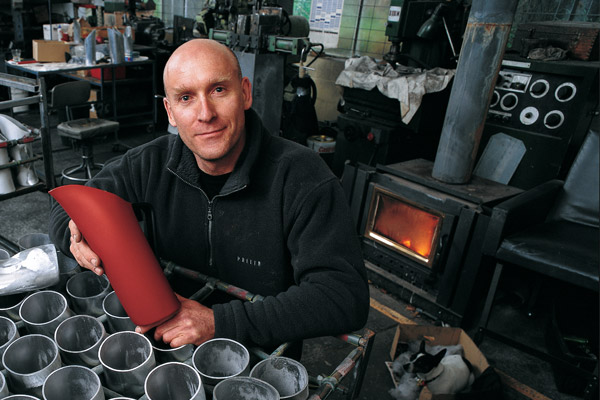
In the full bite of winter, on the outskirts of Queanbeyan, NSW, Robert Foster’s small factory is no style haven. The machinery is second-hand, the light pure fluoro, the comforts spartan. Expense is spared. The many orders and projects at different stages of development provide the décor. Steve and Darren are grinding and polishing, Tina is assembling parts. The two family dogs are having a ball. Foster intermittently heaves another log into the fuel stove and we draw around it on salvaged chairs to talk about things that matter: ideas, innovation, energy, integrity and his ambitions for the Australian design industry.
Many people will already know the Fink & Co. water jug. Made of highly polished aluminium, or anodised in striking, fully saturated colours, its sleek but jaunty lines go with the flow of the fluid it is made to hold. “There are a lot of other things that I do, but people always identify me with the water jug,” says Foster, although he also says that “a lot of people think it’s made by Alessi.” There’s no doubt, however, that it is a significant item. Highly acclaimed and commercially successful in Australia, it is available at the Museum of Modern Art in New York, and, along with 12 other Fink products, will soon be distributed throughout the United States.
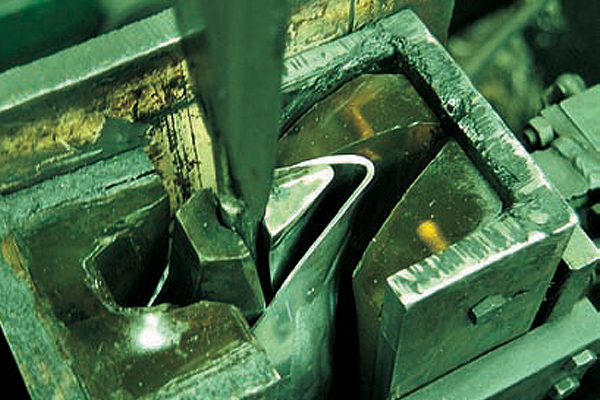
Water jugs and and explosive vases in the making.
Created in 1994, as part of a contract to produce the fittings for a Canberra restaurant, three jugs were made initially – “all slightly different – partly pressed, partly hammered, formed by hand. The idea for the jug came very quickly,” he says. The intention was that “it should balance in your hand well, and all the lines should emphasise the pouring action. The handle has that kick at the bottom, which reflects the flick of the spout.
“It does seem ironic that the jug arrived so quickly,” he says, because as a result of these few inspired moments his life and work took off in a new direction. On the strength of it he established Fink & Co. launching himself into product design and manufacturing with business partner, Anthony King. King left two years later and Foster was joined in the company by his life partner, Gretel Harrison. Commercial production had always been a possibility for Foster, but he’d been cautious. “I was very concerned about maintaining integrity and [wanted] to have an input into the whole industry rather than just get caught up in mass-production. I wanted to approach production in the right frame of mind.”
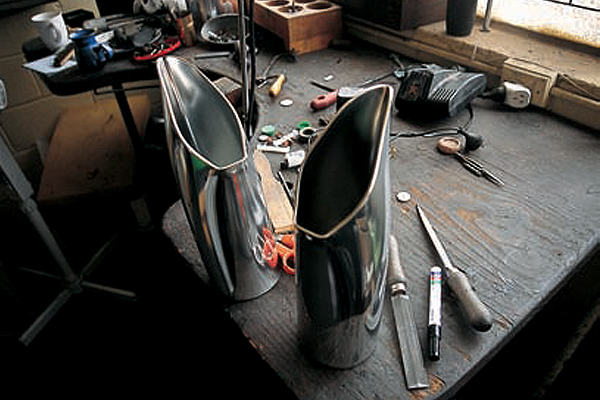
Water jugs and and explosive vases in the making.
As a teenager growing up in Bendigo, Foster began making jewellery and enrolled, straight from high school, in the gold and silversmithing course at Canberra School of Art. His main lecturer here, Ragnar Hansen, a silversmith, encouraged Foster in that direction and became a significant influence on his development. “A silversmith,” says Foster, “as opposed to a goldsmith, who is a jeweller – is somebody who makes vessels: tea sets, cutlery, utilitarian items, traditionally out of silver. My father was a potter, so I understood utilitarian objects. Being around that world, it probably came naturally to me. So my work originated from an understanding of the vessel. The vessel is primary to what I do.”
Of Foster as a student, Hansen says: “I don’t think there was any question that he wasn’t going to be a metalworker. It was his personal energy that predicted his future – he would never stop working. And he didn’t just take techniques for granted, he was prepared to invent things.” He was also physically very strong and absolutely determined. When a request came into the department for one of the students to make a gold ring, says Hansen, Foster volunteered. “But he didn’t have any gold. So what does he do? He goes home to Bendigo and pans the creek, finds the gold, comes back to the workshop, makes the ring. That was Robert Foster.”
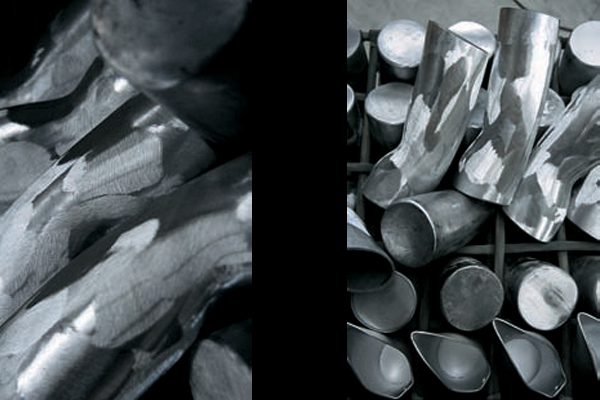
Water jugs and and explosive vases in the making.
While he was still a student, Foster accepted pragmatically that he needed to use a cheaper material than silver. He turned to aluminium and remembers his first piece as one of the best he’s ever made: “It was quite beautiful. In hindsight, technically I’d have trouble trying to do the same thing now.” He then discovered the process of anodising “which allows you to put a strong impervious surface on the material and put colour into it was well. I found that exciting. I realised the material had a lot of potential.” As a result Foster developed an affinity with aluminium and continues to work with it today, along with stainless steel and, more recently, titanium. “But the beauty of aluminium is that it’s so easy to manipulate and it’s readily available in all sorts of sizes and shapes.”
After his post-graduate studies, Foster propelled himself into an intense and prolific period, working on commissions and one-off pieces, honing his hand-making skills and developing his aesthetic understanding. “All the work and research that I did – trying to push boundaries, continually trying to challenge myself – really helped develop my mind and my visual cognition.”
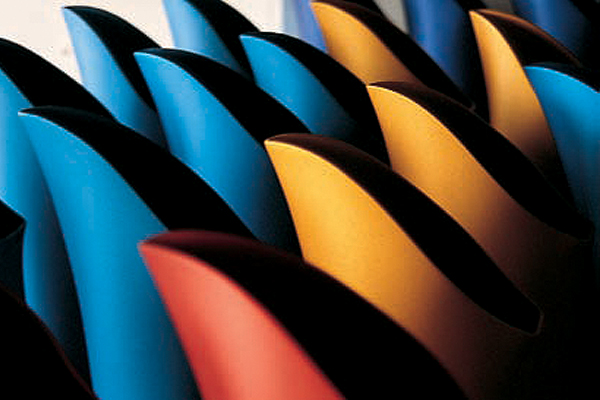
Water jugs and and explosive vases in the making.
But where does his strong sense of form and design spring from? The organic shapes and fluid curves he uses clearly suggest the natural world. “Nature was a big part of growing up for me and I’m sure that, subconsciously, it had an effect on my sense of aesthetics.” His fundamental objective, he says, is “to create an energy in the object, to give it some sort of life or kinetic [quality]. A lot of the objects that I’ve made teeter a bit because I like them to have movement and action.” He makes it sound simple. Just add the mystery ingredient, his unique ability, and you get impactful work that’s extraordinarily evocative yet not representative; objects that are elegant, sure, often archly original, and seductively finished. “Part of my training, and part of my personality is to consider and resolve everything, and finish the detail to the nth degree.”
He met with significant early success. During the late 80s and early 90s, he exhibited in solo and group shows in Sydney, Melbourne, Hobart and Canberra, in the National Gallery and regional galleries, and in Munich and Hamburg, Germany. In 1992 he was invited to exhibit at the prestigious Museum for Angewandte Kunst in Germany. “To be asked to exhibit in a major museum, with [two other] silversmiths – probably the best silversmiths in the world – was quite an achievement, particularly for my age.” He was thirty.
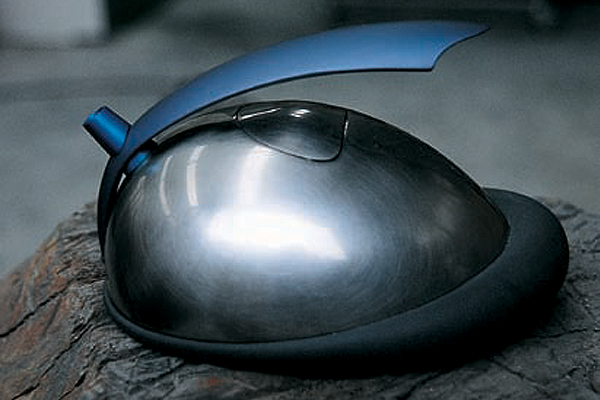
‘Sparrow’ teapot, 2000, hand-raised stainless steel, anodised aluminium handle and spout, 120mm x 120mm x 180mm
As it happened, Alberto Alessi had heard about that exhibition and later asked Foster to design something for the Alessi range. “He was talking about setting up a small workshop on the shores of Lago Maggiore. Dream, dream, dream!” says Foster. But after sending Alessi his designs, Foster received no reply. Made only more determined by this snubbing, Foster decided he would produce the pieces himself. “That was part of the start of Fink as well,” he says. “Unfortunately that’s a big part of my attitude. I just say, oh well, I’ll do it myself, which means I’m always overburdened with things to do.”
(As a post-script to that episode, several of his pieces are now included in the collection at the Alessi Museum, Italy. He has also been asked to design some teapots for Alessi. This time he did get a response, although he’s yet to reply to a request for further work. “Some people would just go: Gasp! How could you do that?” he laughs. “I’ve been too busy.”)
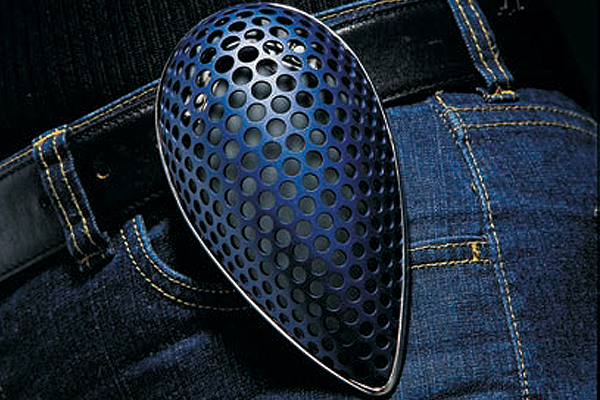
‘Buckle Hip Pod’ (2001) hand-raised stainless steel, rubber, 35mm x 110mm x 70mm
Apart from the advent of the jug and the Alessi incident, a few other factors were involved in the formation of Fink & Co. Tired of getting by on a “shoestring budget” Foster was looking for a stable income that would support him while he continued his one-off, commission and exploratory work. A successful segue into manufacturing could well be pie-in-the-sky for many craftspeople, but Foster’s strength is that he has two distinct strands to his talent – his highly developed design aesthetic is matched by an innate hands-on technical ability.
“I was always interested in the engineering side of things, the mechanics, and the technical aspects of production. I’ve been interested in machines ever since I was a kid.” While he started Fink with the intention of “farming out” as much of the production as possible, he was soon disappointed. “We hit so many problems with quality control, we now do a lot of it ourselves.” As a result, he’s been learning a lot about toolmaking and engineering processes on the job.

‘Blue Ether’ handbag (2001) water-formed anodised aluminium plastic-lined rubber trimming 280mm x 110mm x 320mm
But it’s his continual urge to push the boundaries, to come up with innovative technical or manufacturing solutions, that makes Foster remarkable. “It’s about the challenge of trying something new and having a fresh approach. Design is a process of discovery – the satisfaction is in the innovation. The challenge of getting a process to work with an object, or of trying a new machine or a new process – that’s something that’s always driving me,” he says.
The water jug is a good example. “While most vessels are made of sheet metal, formed in some way, the jug is made from aluminium pipe, pressed into shape.” Foster not only came up with the manufacturing process, he also designed and made the machine that presses it. Because the jugs are largely hand-made, production (particularly polishing) is labour intensive. “Refining the process of manufacturing has taken a long time and there are still things we want to do to improve it in terms of efficiency.”
He has also developed a process that uses water pressure to form sheet metal. “Car manufacturers are starting to use similar processes, but I think the way I tackle it, and what I actually achieve, is pretty cutting edge in a lot of ways.” Many of his one-off pieces are water-formed and he’s currently using the technique to create computer housings for touch screen kiosks. Another of his designs, a waisted piece called the Explosive Vase, is literally formed by placing explosives inside a piece of aluminium pipe. “Having always had a fascination with explosives, it was an ideal way to legitimise playing around with them,” he says. “There’s no lack of ideas, no lack of designs there. It’s more a lack of time and resources to get them out there.”
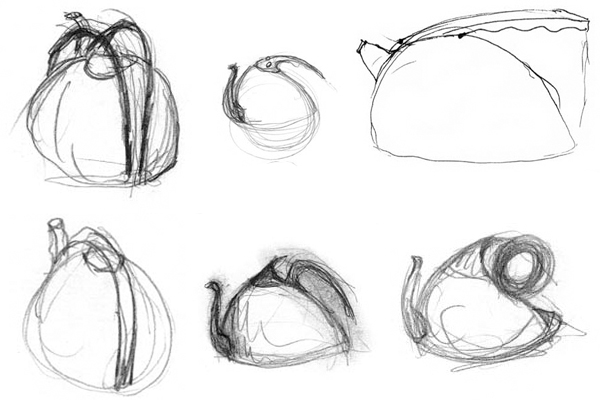
Working drawings for the ‘Sparrow’ teapot, 2000.
These ideas, and the freshness of his approach are evident in the range of objects he’s been creating. Along with his vessels – teapots, vases, bowls, beakers and lidded containers he’s been designing bodywear – a series of stainless steel hip pods that carve out a new territory somewhere between a purse or wallet and jewellery for the body. He’s made briefcases and handbags out of aluminium, with leather and perspex inside and rubber or stainless steel trim. Since his first exhibition of furniture and lighting in 1986, he has continued to work in both these areas. Using the water-forming technique he’s made a range of dramatically sculptural aluminium and glass tables. While working with Germany’s influential lighting designer, Ingo Maurer in 2000, he created three new lighting designs. He has also developed and patented a magnetic ball-joint fixing for low voltage lights.
“We’re constantly trying new things,” says Foster. “It’s just because I find it hard to sit still.” His energy is still intense. You suspect he doesn’t waste it either. Robert Foster, the man, is purposeful, unassuming, down-to-earth and human, with notable eyebrows and, when it escapes, a drawcard smile. He is also as committed as ever to his personal direction and his objectives for the company. “It’s important to me to always keep my background as a silversmith central to my existence. That’s where my heart and soul lie. I’m determined never to let go of the hand-making process,” he says, not least because his silversmithing skills work beautifully as R&D for Fink & Co. His craft skills allow him to prototype an object easily. Because the prototype functions in every respect it can be thoroughly reviewed. The manufacturing feasibility and the economics of producing the object also become evident during the making process. Then, through his crafts network, the piece can be exhibited, providing valuable feedback in assessing whether or not to progress it to full production.
As for the company, his original vision remains: to develop innovative products that challenge conventions; to combine technical accomplishments hand in hand with aesthetic ones; and to create objects which are uniquely Australian. But how does he achieve ‘Australianness’? “From my experience of people in Europe, they’re intrigued by what goes on in Australia. We’re on the other side of the world, we must think differently, we must do things differently – and to some extent we do. The anodising helps because there’s something colourful about Australia. [There’s] something about the line [that relates to] the pioneering spirit. The individuality of the object, the innovativeness of it, even the exotic nature of it, perhaps, [suggest] the unknown.”
In achieving these goals Foster would like to see Fink & Co. competes on the same level as an Italian or European manufacturer. This leads to another, wider ambition. “It would be a really valuable thing to play a part in forging the whole industry in this country.” He envisages a local version of the Scandinavian design movement. “I think there are quite strong parallels between Scandinavia and Australia, because that industry came from a small country (population-wise) and from a hand-making perspective. We don’t have the industry to go straight into production the way Europe does, but I think Australia has the potential to come at it from a workshop basis. “I think it can happen. But it could also be just a pipe dream. I could be just bluffing myself and the sensible thing to do would be just to go to Europe and work as a designer. But my approach is different. I’ve always been a do-it-yourself person, so I’m involved very much through the whole process, from the beginning right through to the end.” He laughs. “It’s hard to break the habit of thinking that you can make everything, that nothing’s impossible.”
Portrait by Anthony Browell.
Robert Foster was featured as a Luminary in issue #11 of Indesign, originally published in August 2002.
–
Sadly Robert Foster passed away in July 2016.
INDESIGN is on instagram
Follow @indesignlive
A searchable and comprehensive guide for specifying leading products and their suppliers
Keep up to date with the latest and greatest from our industry BFF's!

Welcomed to the Australian design scene in 2024, Kokuyo is set to redefine collaboration, bringing its unique blend of colour and function to individuals and corporations, designed to be used Any Way!

The undeniable thread connecting Herman Miller and Knoll’s design legacies across the decades now finds its profound physical embodiment at MillerKnoll’s new Design Yard Archives.

Congratulations to Kerstin Thompson, 2023 recipient of the Australian Institute of Architects’ Gold Medal. We revisit Kerstin’s many accomplishments, among them being named an INDESIGN Luminary.

As NGV’s top design curators, Simone LeAmon and Ewan McEoin have big dreams for the design sector. And they’re coming at it with energy and ambition.
The internet never sleeps! Here's the stuff you might have missed
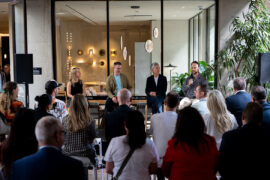
The CBD and South Melbourne Precinct promises a day of design experiences that balance movement, wellbeing, innovation and hospitality.
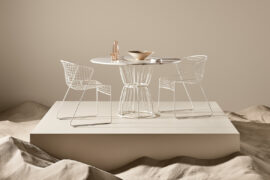
Curvaceous, spiraling forms tell a story of organic precision and artful engineering